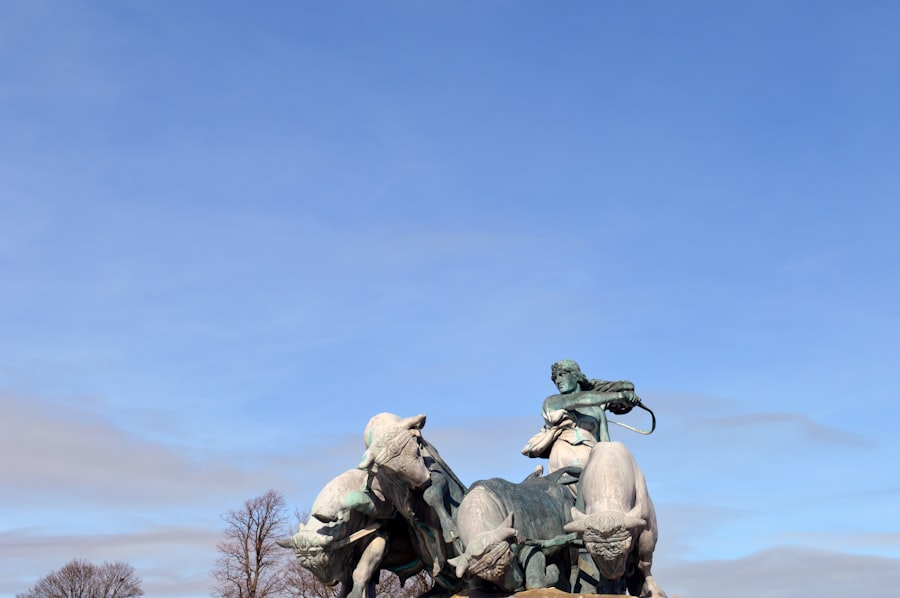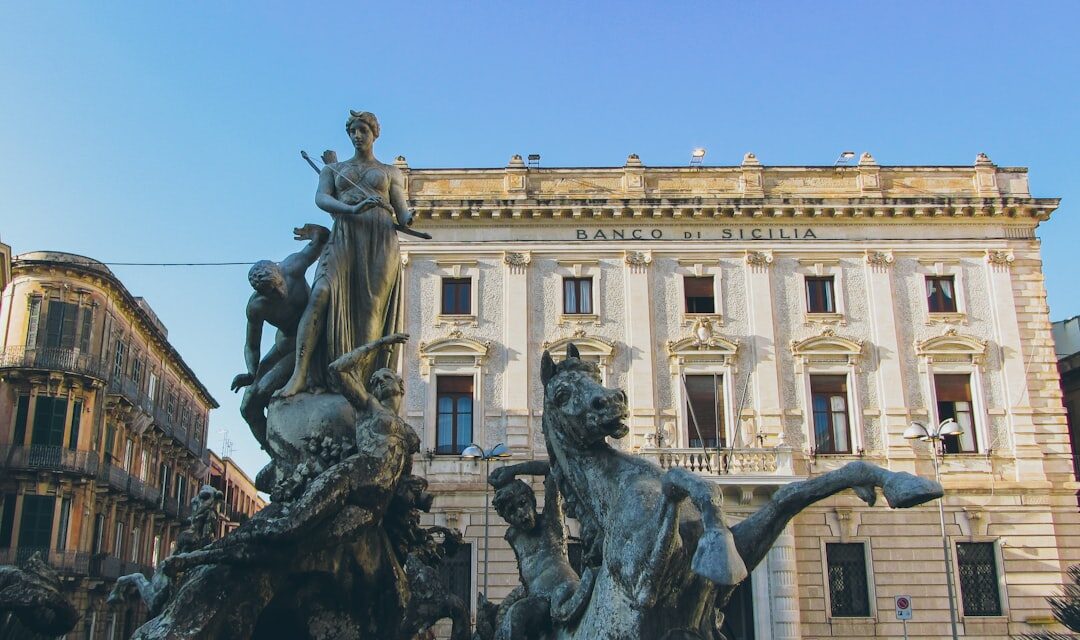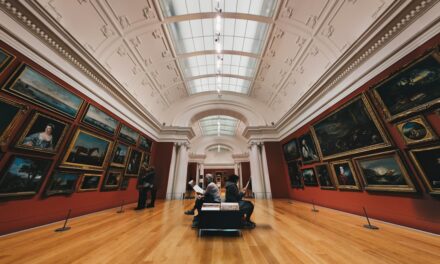Marcel Duchamp was born on 28 July 1887 in Blainville-Crevon, a small village in Normandy, France. He was the third of six children in an affluent family. His father worked as a notary, whilst his mother was an accomplished amateur painter.
Duchamp’s early exposure to art and creativity at home significantly influenced his development as an artist. He demonstrated an early aptitude for drawing and painting, and his parents supported his artistic endeavours. Duchamp’s early influences encompassed the Impressionist and Post-Impressionist movements, as well as the work of Symbolist painters such as Odilon Redon.
He also admired the work of Cubist painters, particularly Pablo Picasso and Georges Braque. Duchamp’s exposure to these diverse artistic styles and movements helped shape his distinctive artistic vision. His early experiences with these different artistic influences formed the foundation for his later groundbreaking work in the Dada and conceptual art movements.
In 1904, Duchamp’s family relocated to Paris, where he commenced his art studies at the Académie Julian. He swiftly became involved in the avant-garde art scene in Paris, where he encountered other influential artists such as Francis Picabia and Guillaume Apollinaire. These early experiences in Paris further stimulated Duchamp’s interest in challenging the boundaries of traditional art forms and experimenting with novel ideas and concepts.
Summary
- Marcel Duchamp was born in France in 1887 and grew up in a creative and artistic environment, which greatly influenced his later work.
- Duchamp was a key figure in the Dada movement, which rejected traditional art and embraced absurdity and irrationality as a response to the horrors of World War I.
- Duchamp’s use of readymades, everyday objects presented as art, challenged the notion of what could be considered art and paved the way for conceptual art.
- “The Large Glass” is one of Duchamp’s most famous works, showcasing his interest in themes of desire and the mechanics of human sexuality.
- Duchamp’s influence on contemporary art can be seen in the work of artists such as Andy Warhol and Jeff Koons, who have embraced his ideas of challenging traditional notions of art.
- Duchamp’s legacy and impact on the art world continue to be felt, with his ideas and concepts still influencing artists and art movements today.
- Duchamp’s work has not been without controversy and criticism, with some questioning the validity and significance of his contributions to the art world.
The Dada Movement
The Birth of Dadaism
Duchamp played a pivotal role in the development of Dadaism, which sought to challenge and subvert established norms and beliefs. The movement was characterised by its rejection of traditional artistic techniques and its embrace of absurdity, irrationality, and anti-art.
The Readymade Revolution
Duchamp’s most famous contribution to the Dada movement was his creation of the readymade, a concept that revolutionised the way art was perceived and created. The readymade involved taking ordinary, mass-produced objects and presenting them as works of art. Duchamp’s most iconic readymade, “Fountain,” consisted of a urinal that he signed with the pseudonym “R. Mutt” and submitted to an exhibition in 1917. This act of presenting a mass-produced object as a work of art challenged the very notion of what could be considered art and sparked intense debate within the art world.
Challenging the Status Quo
Duchamp’s involvement in the Dada movement extended beyond his creation of readymades. He also participated in Dada performances and events, using his wit and irreverence to challenge established artistic and societal norms. Duchamp’s contributions to the Dada movement solidified his reputation as a pioneering figure in avant-garde art and laid the groundwork for his later explorations in conceptual art.
Readymades and Conceptual Art

Duchamp’s creation of readymades marked a significant shift in the way art was conceived and produced. By presenting mass-produced objects as works of art, Duchamp challenged the traditional notions of craftsmanship, originality, and authorship. The readymades forced viewers to reconsider their preconceived ideas about art and to question the role of the artist in the creative process.
Duchamp’s exploration of readymades also laid the foundation for the development of conceptual art, a movement that prioritizes ideas and concepts over traditional aesthetic concerns. Conceptual art seeks to engage viewers intellectually and emotionally, often through the use of language, text, and everyday objects. Duchamp’s readymades exemplify this approach, as they invite viewers to consider the meaning and significance of ordinary objects within the context of an art gallery or museum.
Duchamp’s influence on conceptual art extended beyond his creation of readymades. His writings and theoretical ideas, such as his concept of the “infra-thin” and his interest in chance and randomness, continue to inspire contemporary conceptual artists. Duchamp’s emphasis on the intellectual and philosophical aspects of art has had a lasting impact on the development of conceptual art, shaping the work of artists such as Joseph Kosuth, Sol LeWitt, and Jenny Holzer.
The Large Glass and Other Works
One of Duchamp’s most ambitious and enigmatic works is “The Bride Stripped Bare by Her Bachelors, Even,” also known as “The Large Glass.” This monumental piece, created between 1915 and 1923, is a complex assemblage of glass panels, lead wire, dust, and other materials. “The Large Glass” is a prime example of Duchamp’s interest in exploring new artistic forms and challenging traditional modes of representation. The subject matter of “The Large Glass” is equally enigmatic, featuring a complex narrative involving a bride, her bachelors, and various mechanical contraptions.
The work defies easy interpretation, inviting viewers to engage with its intricate symbolism and cryptic imagery. Duchamp’s use of unconventional materials and his rejection of traditional artistic conventions make “The Large Glass” a seminal work in the development of modern art. In addition to “The Large Glass,” Duchamp created other significant works that continue to captivate audiences and scholars alike.
His “Rotoreliefs,” for example, are spinning optical illusions that challenge viewers’ perceptions of space and movement. Duchamp’s interest in kinetic art and visual experimentation is evident in these mesmerizing works, which anticipate later developments in Op Art and kinetic sculpture.
Influence on Contemporary Art
Duchamp’s impact on contemporary art is profound and far-reaching. His radical redefinition of what could be considered art continues to inspire artists working in a wide range of media and styles. Duchamp’s emphasis on ideas over aesthetics has had a lasting impact on conceptual art, performance art, installation art, and other experimental forms.
Contemporary artists continue to engage with Duchamp’s legacy through their exploration of everyday objects, language-based art, and participatory experiences. Artists such as Ai Weiwei, Damien Hirst, and Tracey Emin have all cited Duchamp as a major influence on their work. Duchamp’s subversive approach to art-making has also inspired generations of feminist artists who seek to challenge patriarchal norms and reclaim agency over their own creative expression.
Duchamp’s influence extends beyond the realm of visual art, shaping developments in music, literature, film, and popular culture. His ideas about chance, randomness, and authorship have informed avant-garde movements in music and literature, while his playful irreverence has resonated with filmmakers such as Jean-Luc Godard and David Lynch. Duchamp’s impact on contemporary art is evident in the diverse ways that artists continue to engage with his ideas and challenge established norms.
Legacy and Impact

Marcel Duchamp’s legacy as an artist is multifaceted and enduring. His groundbreaking contributions to Dadaism, conceptual art, and avant-garde aesthetics have had a profound impact on the development of modern and contemporary art. Duchamp’s emphasis on intellectual engagement, subversion of artistic conventions, and redefinition of what could be considered art continue to resonate with artists, scholars, and audiences around the world.
Duchamp’s legacy is also evident in the ways that museums, galleries, and cultural institutions continue to engage with his work. Retrospectives of Duchamp’s art have been held at major institutions such as Tate Modern in London, MoMA in New York, and Centre Pompidou in Paris. These exhibitions have provided audiences with an opportunity to explore Duchamp’s diverse body of work and to consider his ongoing relevance to contemporary artistic practice.
Duchamp’s impact on the art world is also reflected in the numerous scholarly studies, publications, and conferences dedicated to his life and work. Art historians continue to explore Duchamp’s complex relationship with modernity, his engagement with philosophical ideas, and his influence on subsequent generations of artists. Duchamp’s legacy as an artist continues to inspire new avenues of research and critical inquiry, ensuring that his contributions to the history of art remain vital and relevant.
Controversies and Criticisms
Despite his enduring influence on contemporary art, Marcel Duchamp’s work has not been without controversy or criticism. Some traditionalists have dismissed Duchamp’s readymades as mere gimmicks or provocations that lack artistic merit. Critics have also questioned whether Duchamp’s emphasis on ideas over aesthetics has led to a devaluation of craftmanship and technical skill in contemporary art.
Duchamp’s use of irony, humour, and irreverence has also been a source of contention for some viewers. His subversion of established artistic norms has led to debates about the nature of artistic authenticity and originality. Some critics argue that Duchamp’s radical redefinition of what could be considered art has contributed to a sense of confusion or disillusionment within the art world.
Despite these criticisms, it is clear that Duchamp’s impact on contemporary art cannot be overstated. His willingness to challenge established norms and push the boundaries of artistic expression continues to inspire artists working in diverse media and styles. Duchamp’s legacy as an artist remains vital and relevant, ensuring that his contributions to the history of art will continue to be celebrated and debated for generations to come.
If you are interested in learning more about the art movements that influenced Marcel Duchamp’s work, you should check out this article on Cubism. Cubism was a revolutionary art movement that emerged in the early 20th century and had a significant impact on Duchamp’s artistic development. Understanding the principles of Cubism can provide valuable insights into Duchamp’s innovative approach to art and his lasting influence on the art world.
FAQs
Who is Marcel Duchamp?
Marcel Duchamp was a French-American artist who is best known for his contributions to the Dada and Surrealist movements in the early 20th century. He is also famous for his readymades, which were everyday objects that he selected and presented as art.
What are some of Marcel Duchamp’s most famous works?
Some of Marcel Duchamp’s most famous works include “Nude Descending a Staircase, No. 2” (1912), “Fountain” (1917), and “The Bride Stripped Bare by Her Bachelors, Even” (1915-1923).
What is the significance of Marcel Duchamp’s “Fountain”?
“Fountain” is a readymade sculpture that Duchamp presented as art by submitting it to an exhibition under the pseudonym “R. Mutt.” It caused controversy and challenged traditional ideas about what could be considered art, making it a significant work in the history of modern art.
How did Marcel Duchamp influence the art world?
Marcel Duchamp’s work had a profound impact on the development of conceptual art and the idea that the concept or idea behind the work is more important than the craft or aesthetics. He also challenged the traditional notions of art and paved the way for future generations of artists to experiment with new forms and ideas.
What is Marcel Duchamp’s legacy?
Marcel Duchamp’s legacy is that of an influential and groundbreaking artist who changed the course of art history. His ideas and works continue to inspire and influence artists, and his impact on the art world can still be felt today.




